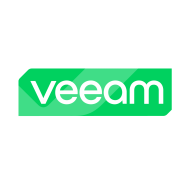

SolarWinds Virtualization Manager and Veeam Data Platform engage in the virtualization and data protection category, with Veeam often favored for its comprehensive protection capabilities.
Features: SolarWinds Virtualization Manager offers robust performance monitoring, in-depth capacity planning, and advanced alerting systems. Its monitoring capabilities include seeing VM-level IOPS data without agent use. Veeam Data Platform provides unparalleled data replication, instant recovery options, and strong data protection measures for backup solutions.
Room for Improvement: SolarWinds could enhance its integration options and user interface for more intuitive navigation. Its alert system and reporting capabilities may benefit from additional customization options. Veeam could simplify its configuration process and improve its support for diverse infrastructure environments. It might also expand its support for additional cloud platforms and improve the speed of some complex backup operations.
Ease of Deployment and Customer Service: SolarWinds Virtualization Manager features a smooth installation process and easy integration with existing infrastructures, providing a more intuitive setup experience. In comparison, Veeam Data Platform offers extensive support and robust recovery capabilities, yet may require more complex configuration due to its wide range of functionalities.
Pricing and ROI: SolarWinds Virtualization Manager tends to have a lower initial cost, appealing to users focused on virtualization insights rather than extensive data protection. In contrast, Veeam Data Platform's higher pricing reflects its comprehensive feature set, with many users finding long-term value in its advanced backup and recovery capabilities. SolarWinds tends to offer a quicker ROI in environments focused on virtual performance.
| Product | Market Share (%) |
|---|---|
| Veeam Data Platform | 8.7% |
| SolarWinds Virtualization Manager | 9.5% |
| Other | 81.8% |


| Company Size | Count |
|---|---|
| Small Business | 2 |
| Midsize Enterprise | 2 |
| Large Enterprise | 3 |
| Company Size | Count |
|---|---|
| Small Business | 216 |
| Midsize Enterprise | 99 |
| Large Enterprise | 138 |
Veeam Data Platform is designed for modern data management, providing secure backups, intelligent data insights, and resilience. It ensures data is protected, recoverable, and manageable across complex environments, supporting business continuity effectively.
Veeam Data Platform stands out with its robust capabilities in data protection, orchestrated recovery, and efficient management. It offers a simple interface while ensuring data security and availability, which is critical for businesses. The platform's compatibility with virtual machines, databases, and applications across VMware, Hyper-V, and cloud environments makes it a versatile choice for backup and disaster recovery strategies. Users gain confidence from its performance, from secure backups to facilitating effective infrastructure monitoring.
What are the key features of Veeam Data Platform?Veeam Data Platform is widely implemented by industries needing robust disaster recovery plans and data management solutions. It is particularly valuable in environments utilizing hybrid cloud solutions, protecting mission-critical workloads, and ensuring business continuity. Businesses leverage its capabilities to safeguard data integrity and facilitate long-term retention through efficient infrastructure management.
We monitor all Virtualization Management Tools reviews to prevent fraudulent reviews and keep review quality high. We do not post reviews by company employees or direct competitors. We validate each review for authenticity via cross-reference with LinkedIn, and personal follow-up with the reviewer when necessary.